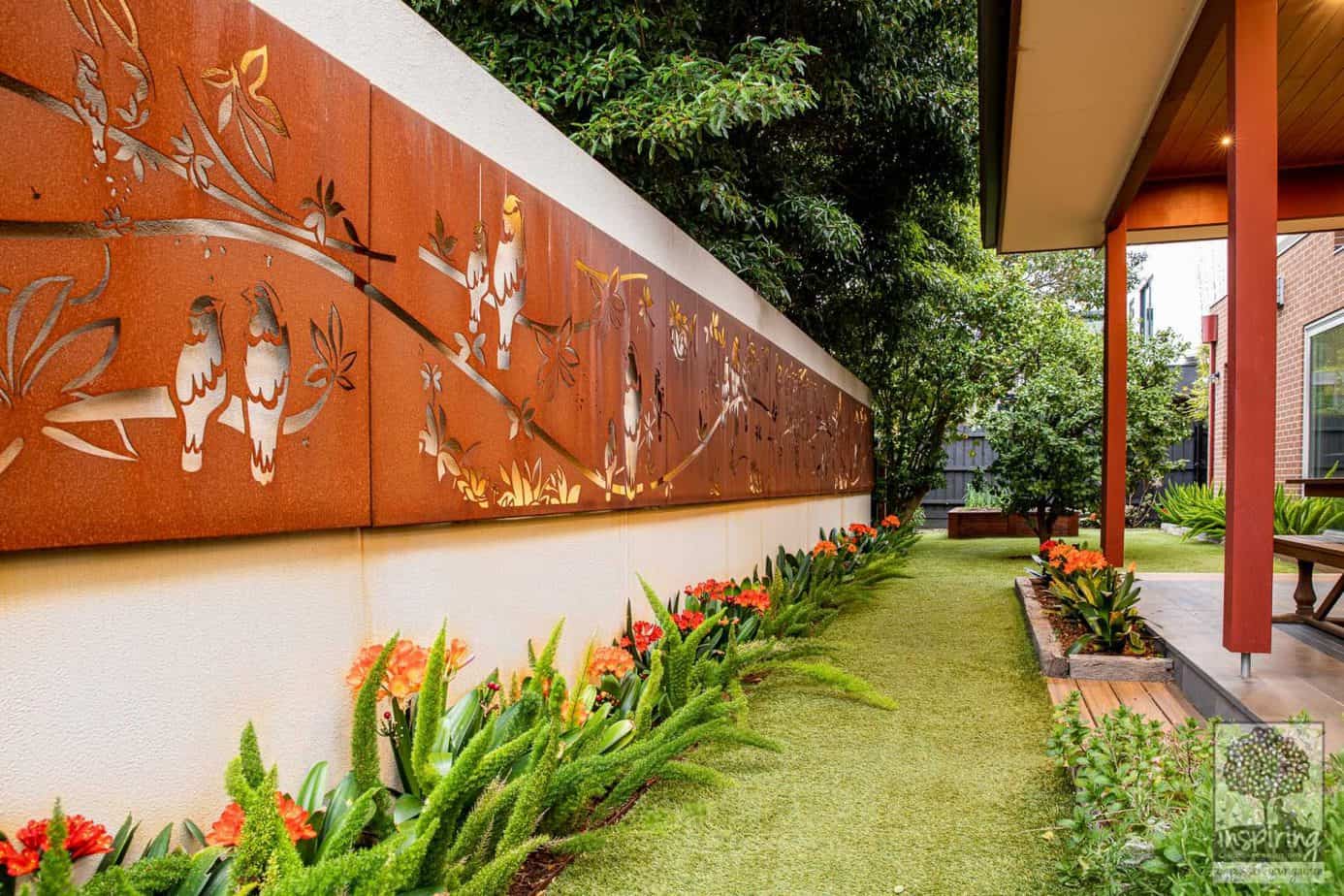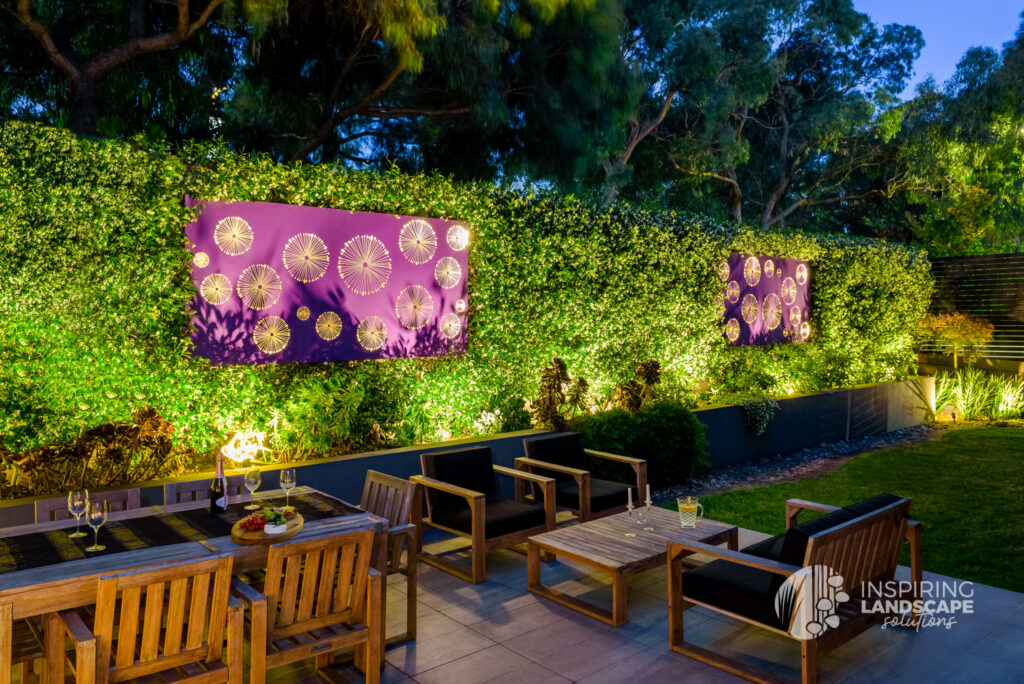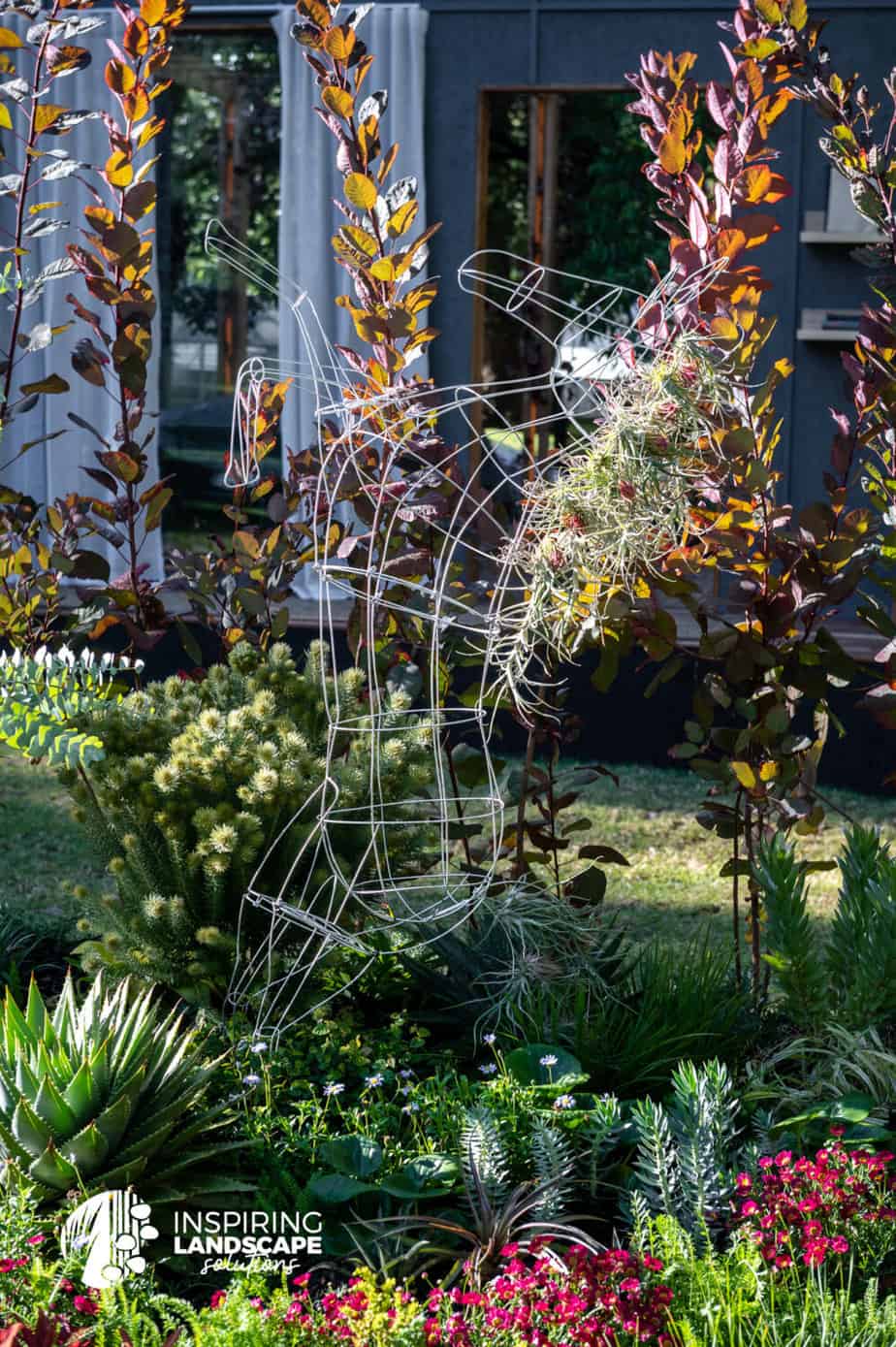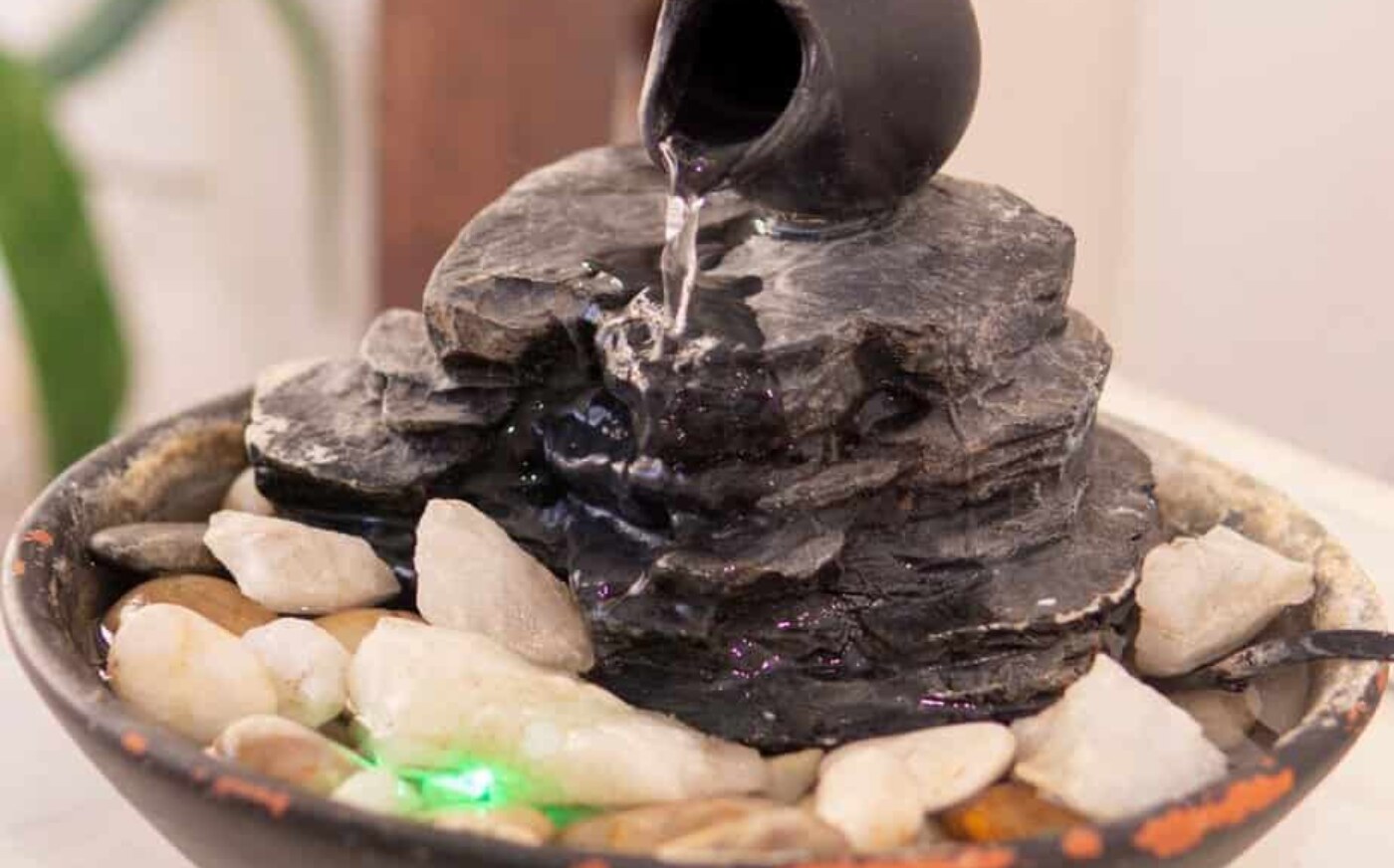Gardens are often considered sanctuaries of natural beauty and tranquillity. They are spaces where we can escape the hustle and bustle of everyday life, reconnect with nature, and find solace. While the lush greenery, vibrant flowers, and well-tended landscapes are essential elements of a beautiful garden, there is another facet that can elevate these spaces to new heights: garden art.
The question that often arises is whether garden art is a need or a luxury. In this blog, we will explore the importance of garden art and its role in enhancing our outdoor spaces. In some of my previous garden designs, we have used outdoor wallpaper (Richmond project), sculptures (including the horse I designed as part of my garden show exhibition) and even pots to create a sculpture (Brunswick East project)

The Role of Garden Art
Garden art, which includes sculptures, fountains, mosaics, and various other creative expressions, serves several significant roles in the garden environment. These roles are essential for the physical and mental well-being of those who experience these spaces.
Aesthetic Appeal: Garden art adds a touch of beauty and elegance to a garden. It transforms ordinary green spaces into visually captivating landscapes, offering a feast for the eyes. The interplay of colours, shapes, and textures can mesmerise and create a sense of wonder.
Personal Expression: Garden art allows individuals to express their unique tastes and personalities. Just as art on the walls of our homes reflects our interior design choices, art in the garden becomes an extension of our style and interests. It is a canvas for self-expression. Everyone’s different – sometimes, it’s a focus on colour. For others, it’s a focus on childhood memories of humour.
Creating Focal Points: In garden design, focal points are essential to draw the eye and build a sense of balance. Garden art can act as these focal points, creating a sense of unity and guiding the viewer’s gaze throughout the garden.
Storytelling: Garden art can tell a story or convey a message. It often reflects cultural, historical, or personal narratives, making it a means of communication and education. Statues or sculptures can celebrate historical figures or depict mythological scenes.
Therapeutic Benefits: Gardens and the art within them have medicinal benefits. Spending time in a beautifully adorned garden can reduce stress, promote relaxation, and enhance mental well-being. The visual and sensory experiences in a garden provide solace and comfort.
The Need For Garden Art
While some might argue that garden art is a luxury reserved for those with disposable income, there are compelling reasons to consider it a need for society.
Enhanced Quality of Life: Gardens serve as essential refuges, especially in urban areas with limited green spaces. When gardens incorporate art, they become aesthetically pleasing and emotionally and mentally enriching. The garden, with its art, contributes to the overall quality of life of the community.
Cultural Enrichment: Garden art often reflects the culture and history of a region. This artistic representation is vital for preserving heritage and providing educational opportunities for visitors. Art in gardens can help bridge generational and cultural gaps.
Environmental Stewardship: In an era where environmental conservation is paramount, garden art can serve as a platform for raising awareness. Sustainable and eco-friendly art installations can promote the message of environmental stewardship, encouraging responsible practices in the garden and beyond.

Economic Value: Beyond the personal benefits, garden art can also have a significant economic impact. Tourists are often drawn to cities and regions known for their beautiful gardens, which can stimulate local economies through increased tourism and related businesses.
Community Building: Gardens and their art installations are community spaces. They bring people together, fostering a sense of belonging and social cohesion. Adorned with art, community gardens become gathering places for neighbours, friends, and families.
Inspiration and Creativity: Garden art can be a source of inspiration for artists, designers, and architects. It pushes the boundaries of creativity, resulting in innovation and new ideas that can be applied in various aspects of our lives.

The Luxury of Garden Art
While garden art may be considered a need, it’s undeniable that it can become a luxury when taken to extremes. Lavish, extravagant garden art installations, often reserved for the affluent, can blur the line between need and luxury. However, even in these instances, there is an argument to be made for the value of garden art.
Artistic Mastery: Exquisite and intricate garden art creations showcase artists’ incredible skill and creativity. They represent the pinnacle of artistic achievement and can be celebrated for their craftsmanship.
Exclusivity and Prestige: For some, the exclusivity and prestige associated with luxury garden art are a status symbol. They demonstrate a commitment to exceptional beauty and a dedication to creating a unique outdoor space.
Preservation of Heritage: Historical garden art is sometimes considered a luxury. Precious antiques and rare sculptures require significant investments in maintenance and restoration to preserve the cultural heritage they represent.
Garden art is a vital component of our outdoor spaces, and it can be both a need and a luxury, depending on the context. Its importance goes beyond aesthetics, offering communities therapeutic, cultural, and social benefits.
While the concept of luxury garden art does exist, the overall impact of garden art on our quality of life, culture, and environment cannot be understated. Whether we perceive it as a need or a luxury, there is no denying that garden art can transform ordinary gardens into extraordinary, soul-enriching landscapes.



